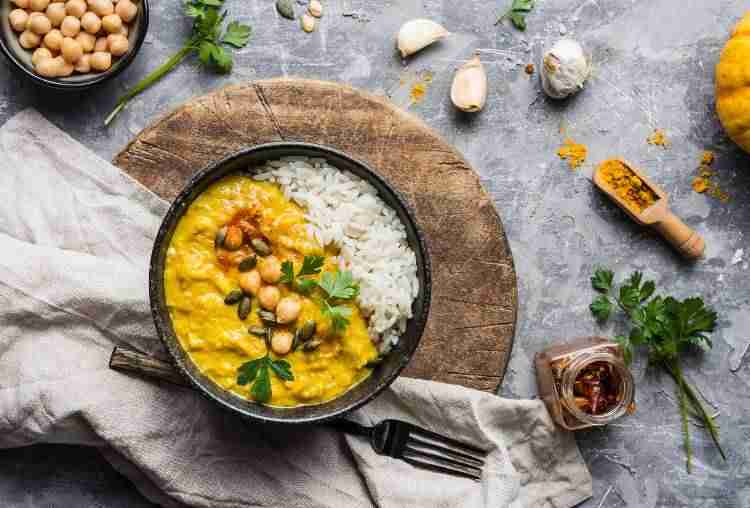There is something unique about regional Indian cuisines that make them tasty, healthy, and satisfying. Traditional Indian food, the way it is cooked and consumed, is a brilliant amalgamation of science and discipline. Even Ayurveda includes food, dhyana, and yoga in its holistic approach to wellness.
Mealawe is a homemade food delivery mobile application and at Mealawe, we believe in promoting cuisines from various parts of our county. Let us learn more about traditional Indian dishes, the science behind them, how they are prepared, and their benefits.
Tadka (tempering)
Many people believe tempering is done to enhance the flavour of the dish. However, tempering also extracts the nutrition and medicinal benefits of the spices used. Traditionally, ghee or vegetable oil is used for tempering.
Spices like cumin, bay leaf, fenugreek, mustard seeds, asafoetida, and curry leaves are added to the ghee. Besides adding flavour to the food, they also have anti-inflammatory and antibacterial properties that make the food suitable for the heart and digestion.
Roti
Roti or chapati is prepared in every Indian home regularly. Since they are made with whole grain wheat, rotis are rich in fibre, carbohydrates, and proteins. They provide energy to the body and increase blood circulation. They are also easy to digest. According to Ayurveda, roti helps to balance the vata and pitta dosha.
Rice and Dal
Rice and dal(lentils) are probably the most popular combination of homecooked Indian food. Dal and rice contain different types of proteins, so eating them together gives complete protein nutrition. Rice is rich in sulfur-based amino acids, while dal is rich in lysine amino acids.
Both dal and rice are rich in fibre, which helps improve digestion and keep diseases like diabetes in check.
Idli
Idli is prepared from the fermented batter of rice and black gram. The fermentation process makes idli more digestible. Fermentation also improves the nutritional and protein efficiency of idlis.
Idli batter also contains probiotic microorganisms like Lactobacillus Plantarum and Lactobacillus Lactis, which produce vitamin B12 and B-galactosidase enzyme, which enhance the probiotic activity.
Roasted Ragi
Ragi is a finger millet that is rich in dietary fibre and nutrients. Due to gelatinization, roasting ragi improves its taste, digestibility, and solubility or starch. It is rich in vitamin C, B-complex, E, and calcium.
It also contains proteins, unsaturated fats, and fibre. Germinating ragi improves the bioavailability of iron and zinc. This superfood is often included in the diet of babies. It can also help handle irritable bowel syndrome.
Dhokla
Dhokla is prepared from the fermentation of besan (Bengal gram) and rice. Fermentation of the batter improves the flavour of the dhokla. The yeast used for culture produces folic acid and helps make the dhokla spongy. The antioxidant properties of dhokla also help in keeping stress-induced degenerative diseases at bay.
Saag
Saag is a popular leaf-based dish from north India. It is made from mustard leaves, spinach, basella, or collard greens. It also includes maize powder, which makes the saag smooth and adds to the flavour. Since it is prepared from green leaves, it is a powerhouse of antioxidants. Besides iron, it contains vitamins A, C, E, and K. Steamed mustard leaves can bind bile acids, which helps lower cholesterol.
Dahi (Yogurt)
Dahi is a naturally fermented cow or buffalo milk product. It is a part of the daily diet of most Indians, and it contains B vitamins, folic acid, and riboflavin. Dahi contains lactic acid bacteria, which has a probiotic effect. It helps improve intestinal health and controls diarrhoea.
Curd is often mixed with cucumber to make cucumber raita, a staple dish during summer. Cucumber gives a cooling effect and improves bowel movements. Cucumbers are also known to detoxify and cleanse your body.
Vegetable curry
The curry is the base of many Indian dishes. Made by blending onion, ginger, garlic, tomatoes, and spices like turmeric, red pepper, black pepper, cumin, cardamom, and coriander, the Indian curry has many health benefits.
You can add lentils and vegetables like cabbage, cauliflower, and potato to this dish. Spices like turmeric and black pepper improve immunity. Curry has antibacterial, antifungal, antiviral, anti-inflammatory, and anti-carcinogenic properties.
Final words
There is so much diversity in the traditional regional cuisines of India. Regardless of the region, the traditional Indian cuisine is rich in nutrition. Even today, the meals prepared in households are made from what fresh produce is available in the markets.
We can say the same for the home cooks at Mealawe, who provide you with daily healthy meals from their home kitchens. Order from Mealawe at your convenience and enjoy their healthy and nourishing meals.


Never thought in this manner, I guess that’s the reason our parents are more health than us!